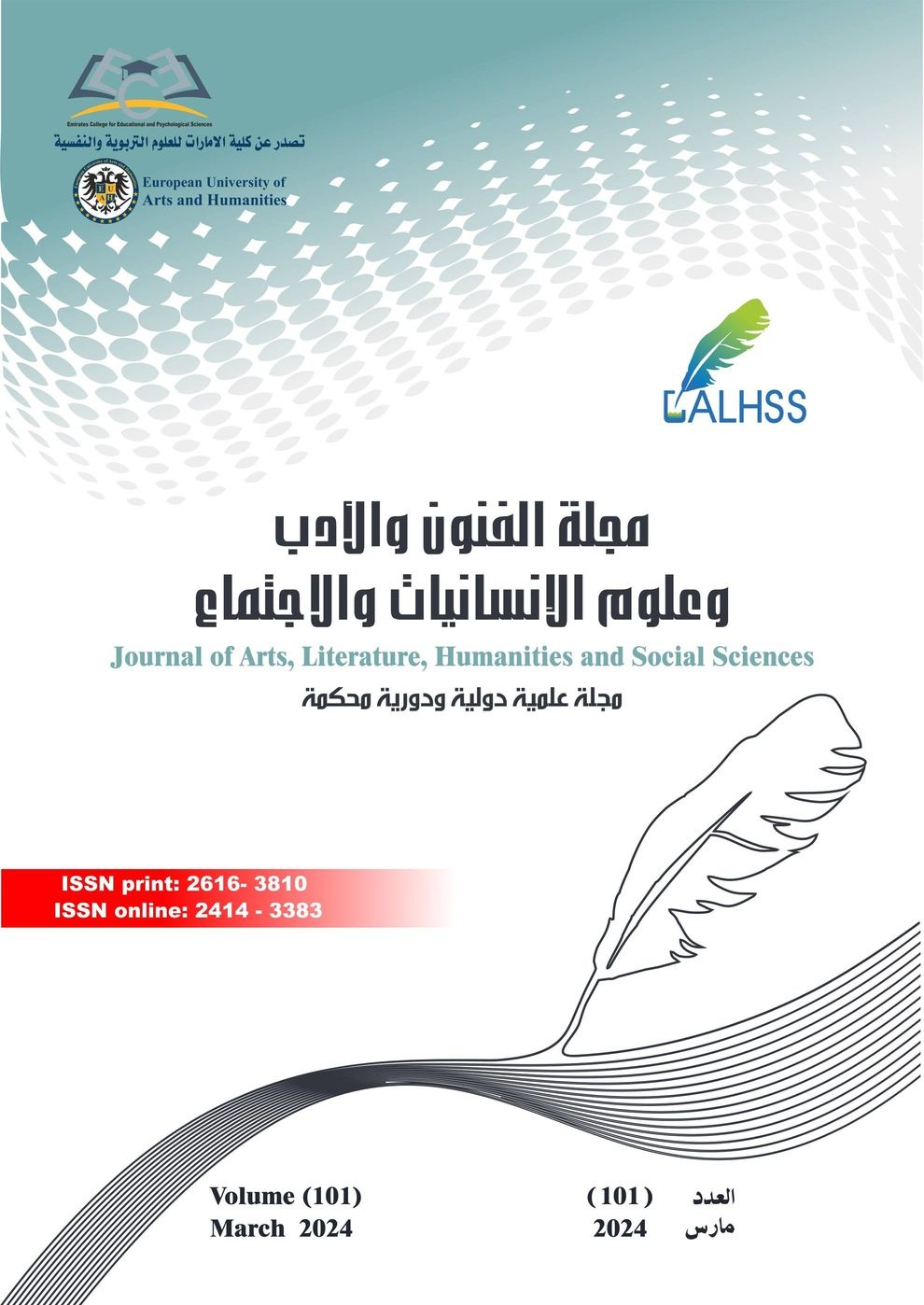Attire in Past and Present
(An Anthropological Study in the Medina Region)
Abstract
This study aimed to identify the key distinctions between ancient and modern attire, the essential components of ancient clothing, and to uncover the reasons that led to the transformation of ancient attire into its current form. It also aimed to examine the prominent features and characteristics of modern clothing and reveal the role played by industrial advancement in altering the appearance of ancient garments. The study employed a historical and descriptive methodology to achieve its’ objectives, utilizing tools such as direct observation, participant observation, and interviews to collect information. These methods were applied to a sample of tribes and families residing in the Medina region. The study findings included the following: Clothing represents a tangible element of cultural identity for any society, and its evolution is closely linked to the development of civilization. Ancient attire serves as a valuable means of expressing a nation's customs, traditions, and heritage. Clothing, as an element of cultural heritage, encompasses various types of garments and accessories worn by individuals in the Madinah region. Based on the findings, the study recommended the necessity of establishing a specialized center or organization for collecting and preserving folk heritage, displaying it as an educational and informative center. There is also a need for organizing periodic exhibitions showcasing folk heritage in the Madinah region to promote awareness of its authenticity. Moreover, specialists in the field of culture and folk arts are encouraged to create an online platform dedicated to the folk heritage of Madinah.
References
2. الجعيد، نهى عوض (2008). ملابس الرجال الشعبية في المنطقة الغربية " دراسة تحليلية" رسالة ماجستير، جامعة الملك عبد العزيز، كلية التربية للاقتصاد المنزلي، قسم الملابس والنسيج، جدة: المملكة العربية السعودية.
3. دعبس، يسرى (2004). متاحف التراث الشعبي والجذب السياحي، سلسلة الدراسات السياحية والمتحفية (8)، الإسكندرية: الملتقى المصري للإبداع والتنمية.
4. الرفاعي نشأت نصر (2000)، إعداد برنامج لتذوق الفنون الحديثة في مجال تصميم الأزياء دكتوراه – تربية فنية – جامعة حلوان.
5. السليماني، نسرين فريد (2009). دور التشكيل في بعض الأزياء التقليدية الهندية والماليزية " دراسة تحليلية مقارنة" رسالة ماجستير، جامعة الملك عبد العزيز، كلية التربية للاقتصاد المنزلي، قسم الملابس والنسيج، جدة: المملكة العربية السعودية.
6. الشريف، دلال عبد الله (2008). تكنولوجيا الضوء في المنسوجات كمصدر للتصميم على المانيكان " دراسة تحليلية تطبيقية" رسالة ماجستير، جامعة أم القرى، كلية التربية للاقتصاد المنزلي، قسم الملابس والنسيج، مكة المكرمة: المملكة العربية السعودية.
7. شكري، نجوى (2001) التشكيل على المانيكان " – دار الفكر العربي – القاهرة.
8. عبد السلام، جنات (2015). المنهج التاريخي في الممارسات النقدية العربية " العرب وتاريخ الأدب لأحمد بوحسن - أنموذجاً" مذكرة مكملة لنيل شهادة الماستر في ميدان اللغة والأدب العربي مسار: نقد أدبي حديث ومناهجه، كلية الآداب واللغات، الجزائر.
9. المسلم، عبد العزيز (د.ت). الأزياء والزينة في دولة الإمارات العربية المتحدة، أبو ظبي، نادي التراث الشعبي.
10. محمد رشيد علي (1990)، تفسير المنار، الناشر: الهيئة المصرية العامة للكتاب سنة النشر: 1990 م.
11. محمد بن مكرم ابن منظور (1414ه)، لسان العرب، ط3، الناشر: دار صادر – بيروت.
12. ناصر بن محمد الغامدي (1434)، لباس الرجل أحكامه وضوابطه في الفقه الإسلامي (رسالة دكتوراه) ط3، دار طيبة الخضراء، مكة المكرمة للنشر والتوزيع.



